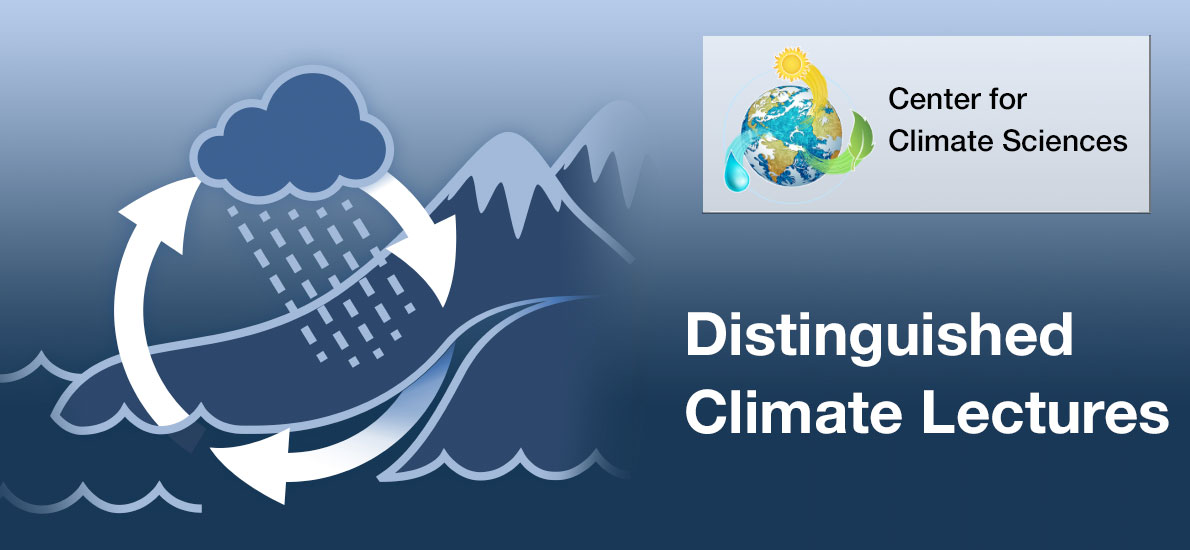Seminars
Radiative-Thermodynamic Modes of Climate
February 29, 2024
| 180-101 (in person) & WebEx, 10:00 am PT
› view lecture

About this Lecture

Climate oscillations and teleconnections are commonly characterized in terms of geographical patterns of key variables such as temperature, pressure and winds, and precipitation. These modes of internal variability – as well as global warming - may also lead to changes in the global probability density distribution of atmospheric temperatures, water vapor and clouds, resulting in variations in the mean planetary energy budget. Of particular interest are the low latitudes due to the strong two-way coupling between near surface moist static energy and the large-scale atmospheric circulation in that region. In this talk, I show that observations in the tropics provide clear evidence for two thermodynamic modes of coupling between the surface and the free troposphere: the first mode is the commonly discussed moist adiabatic relation with the average near-surface MSE, while the second mode arises from a change in the shape of the near-surface MSE distribution function. The latter is key to understanding the perplexing time-varying apparent climate sensitivity of General Circulation Model (GCM) simulations with prescribed SSTs over the historical period, and provides a frame of reference to interpret and discuss the disturbing fact that over the past few decades, observations suggest an amplification of near surface MSE gradients and associated negative atmospheric radiative feedback not found in coupled ocean-atmosphere GCM simulations. Much of the observational evidence is based on robustly observed variations of the climate state related to the El-Nino/Southern Oscillation and raise the seemingly naïve question “why is El-Nino warm?” – with a novel and surprising answer. The relation between subcloud MSE and deep convection is also key to understand the coupling between land and ocean in the tropics. The subcloud MSE maxima in the tropics over land and ocean are very similar, and remain so under climate change which allows to constrain the predictions of future annual maximum heat stress at low latitudes.
About

Stephan Fueglistaler is Professor in the Department of Geosciences at Princeton University. After a MSc thesis on the measurement of tectonic deformations with synthetic aperture radar, he joined a start-up and worked several years as a Software Engineer. In 2000, he made a left-turn and obtained in 2002 his PhD from ETH Zürich with a thesis on Polar Stratospheric Clouds. In 2010 he joined Princeton University, where he is since 2015 also the Director of Princeton’s Program in Atmospheric and Oceanic Sciences, and since 2021 the Director of the Cooperative Institute for Modeling the Earth System.
